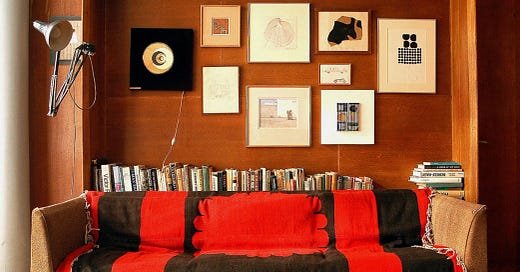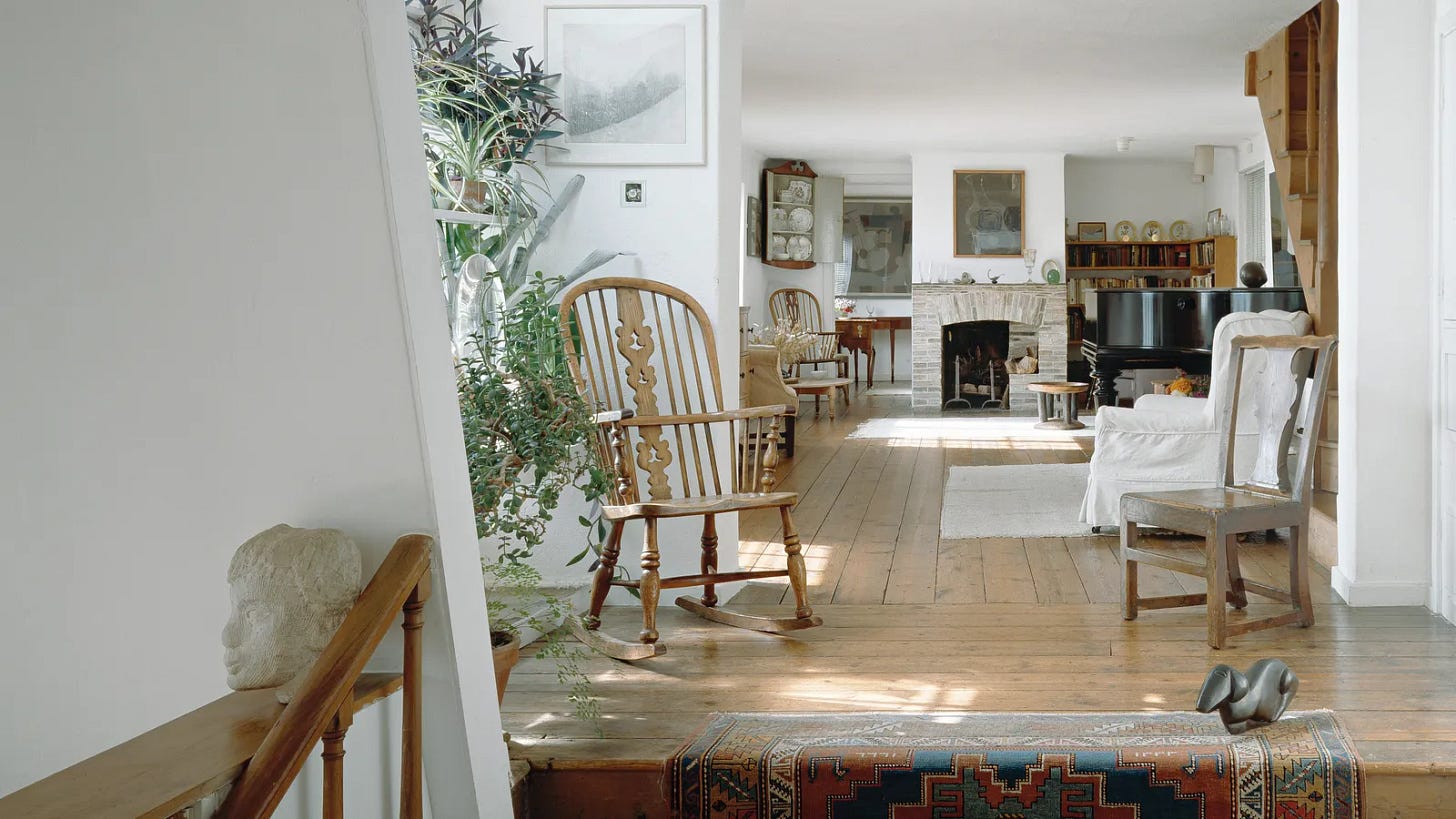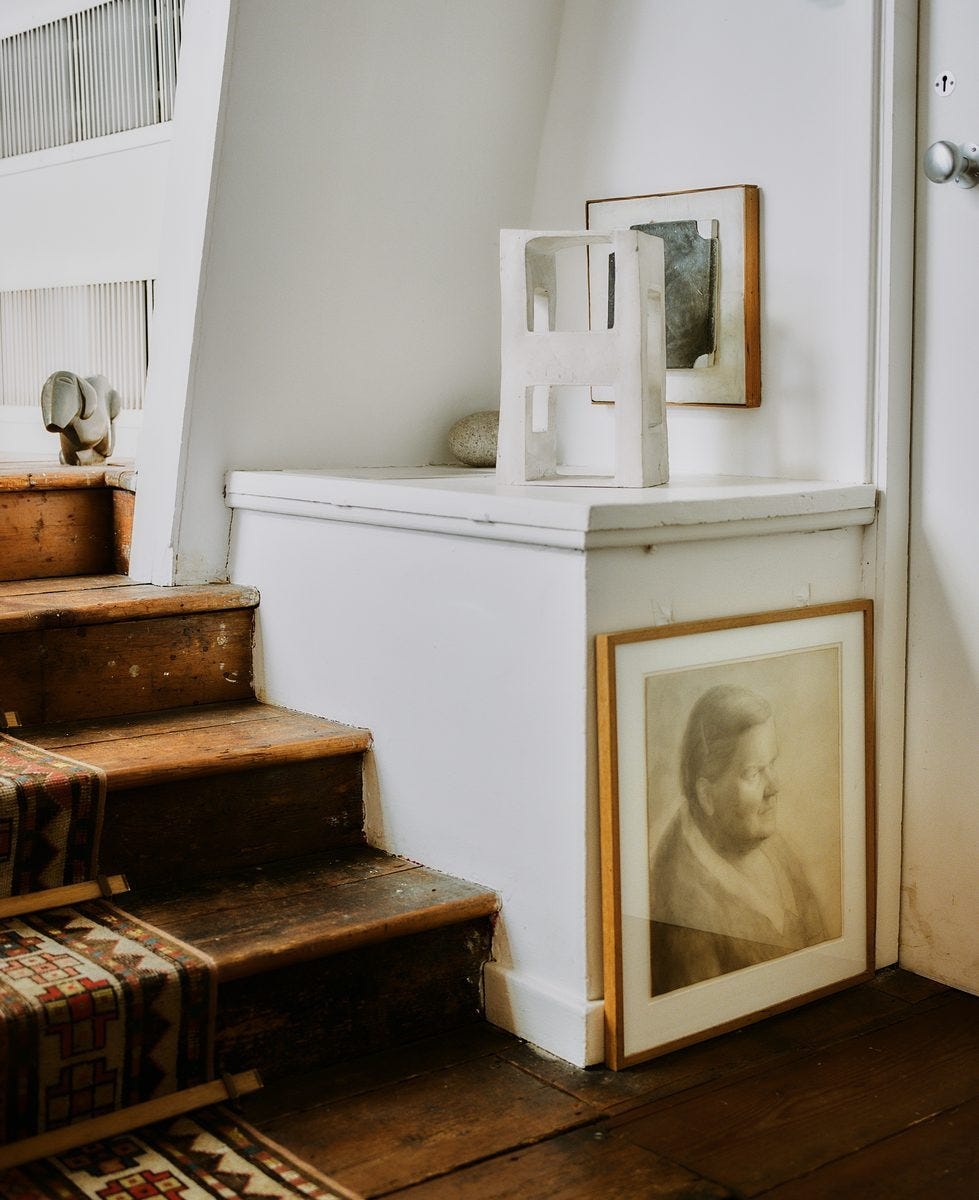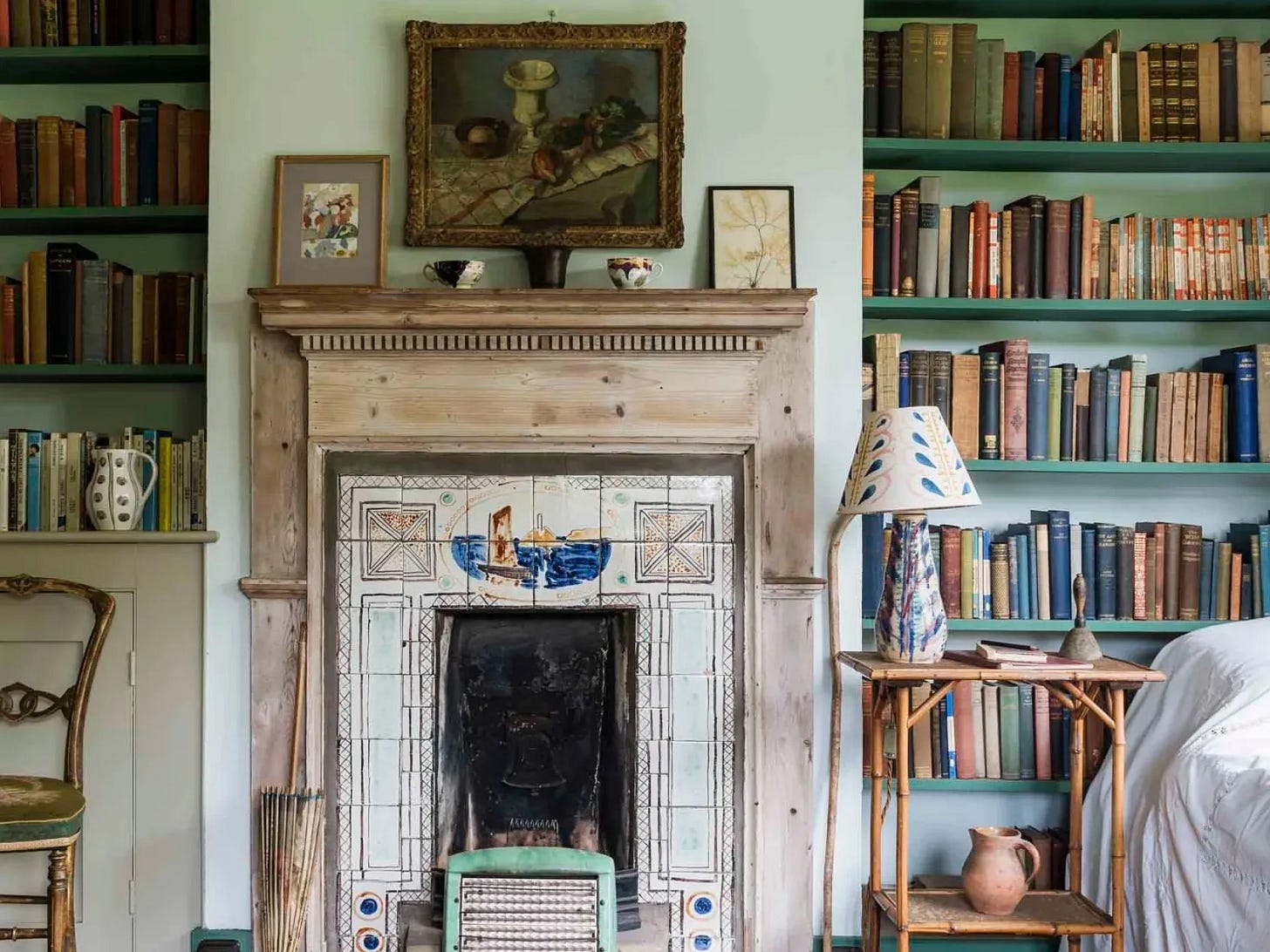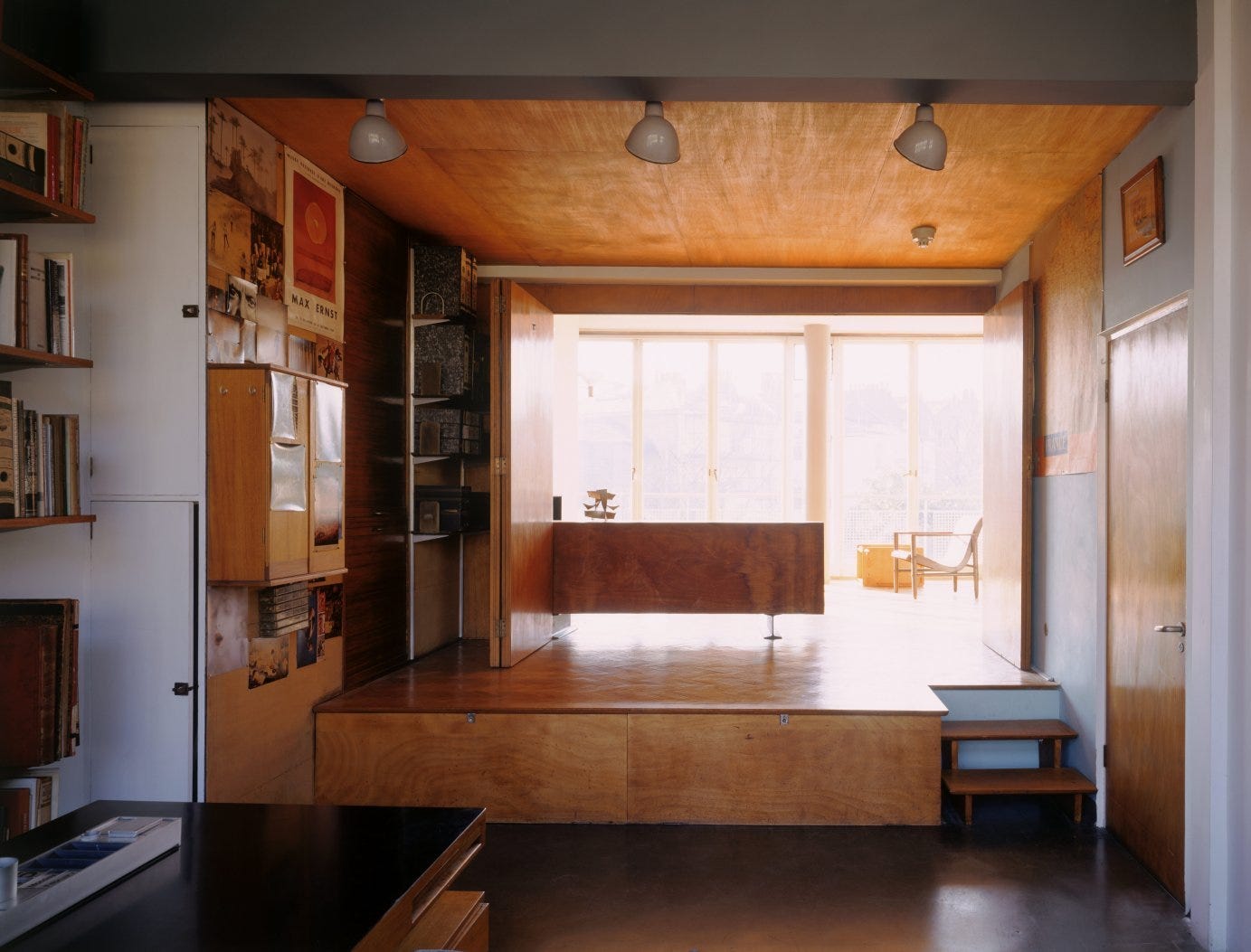10 artist and design-led houses to visit this summer
A reminder to make time for in person inspiration
I’m not sure what the collective term is for this list that I’ve collated - a mix of historical and design-led private homes, museums and artist houses situated across the UK. Some places I’ve visited numerous times and never tire of returning to, others have been on my list for a long time and I’m still yet to make it. Most are closed over the winter months but now the days are getting longer and lighter, they are opening up again which makes it the perfect time to book your visit. Almost everywhere on the list you need to book in advance FYI.
Whilst interiors might be the core subject matter of this newsletter, and I always enjoy ogling colour combinations and furniture arrangements, the obsession also stems from the homes themselves and the fantasy of inhabiting them. I love books where buildings or houses play such a central part of the narrative that they almost feel like a character in their own right - The Dutch House by Ann Patchet, I Capture The Castle by Dodie Smith, The Past by Tessa Hadley, Jane Eyre by Charlotte Bronte, and of course the Harry Potter series. Where part of the experience of reading the book is to traverse the spaces alongside the characters, exploring them virtually via the words on the page. It’s also why I’ll always opt to stay in homes and houses as opposed to hotels, where I get to actually play out the fantasy and pretend for a few days that I live within those walls.
Though many are actually owned by the National Trust, the houses listed here are a lot less stuffy than what you might imagine when you think of a National Trust. These are not grand, palatial houses but relatively modest cottages, farmhouses and apartments. The spaces are intimate, an not only do they offer plenty of interiors inspiration, especially when it comes to antique and second-hand furniture, it’s also a fascinating insight into the lives of the artists that lived and worked there. Many were renovated or fully designed specifically as places to bring their creative visions to life, and have been preserved as they left them.
This newletter took a surprisingly long time to put together and whilst the first five on the list are for all subscribers, the remaining five are for my paid subscribers. As always a big thank you for continuing to read and support Second Best.
Barbara Hepworth Museum & Sculpture Garden. When I had the idea for this newsletter, this was where my mind instantly jumped to. I’ve visited twice before and it is just a magical magical place. Once known as Trewyn Studios and located in St Ives in Cornwall, it’s where renowned British artist Dame Barbara Hepworth lived and worked from 1949 until her death in 1975. It’s not very big, and tucked away in the back streets of the town but to experience her sculptures, some of which are still situated where Hepworth herself originally placed them, within her own studio and garden is so special, even more so if you visit on a sunny day. A must if you’re headed to Cornwall this summer.
Kettle’s Yard. Kettle’s Yard in Cambridge has a bit of a legendary visual status within the realms of Instagram. Even though I am still yet to visit, I feel so familiar with the images of this timeless space that I feel as if I’ve been already. The home of Jim and Helen Ede - Jim was a curator at the Tate Gallery in London in the 1920s and 30s - and together they renovated four derelict cottages to create Kettle’s Yard, living there from 1957 to 1973. The rooms are filled with their collection of artworks, ceramics (mostly from friends and contemporaries including Barbara Hepworth), furniture and natural objects. Visitors are encouraged to sit down and experience the rooms from the perspectives envisioned and enjoyed by Jim and Helen. The website is full of further information and you can even take a virtual tour of the house. There’s also a lovely piece on the Toast journal here.
Charleston Farmhouse. Familiar to many of you I’m sure, Charleston is the legendary Sussex wartime retreat and gathering point for the writers, artists and thinkers known as the Bloomsbury group. It was home to artists Vanessa Bell and Duncant Grant, who treated its walls and surfaces as an extended communal canvas, from the numerous paintings and murals that adorn the walls, door frames, fireplaces and bath panels, to the collections of books, photos, textiles and ceramics. It’s a riot of colour and creativity. In addition to visiting the house and garden, which are open Wednesday - Sunday, there is also now the Charleston festival which takes place from 14 - 26th May 2025.
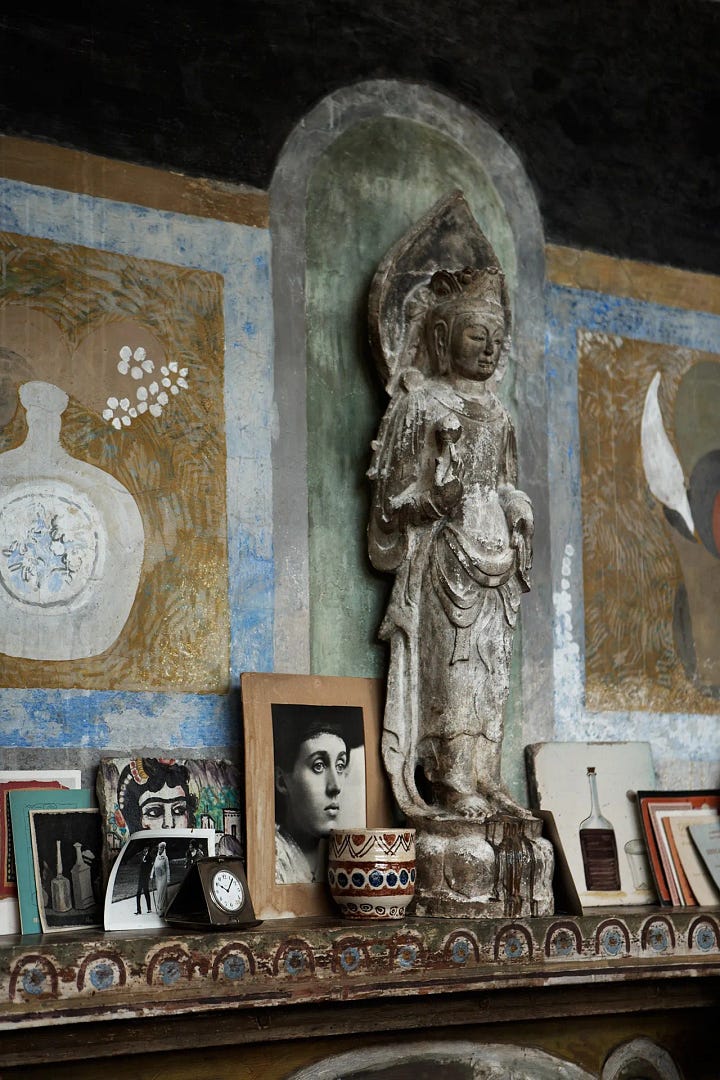
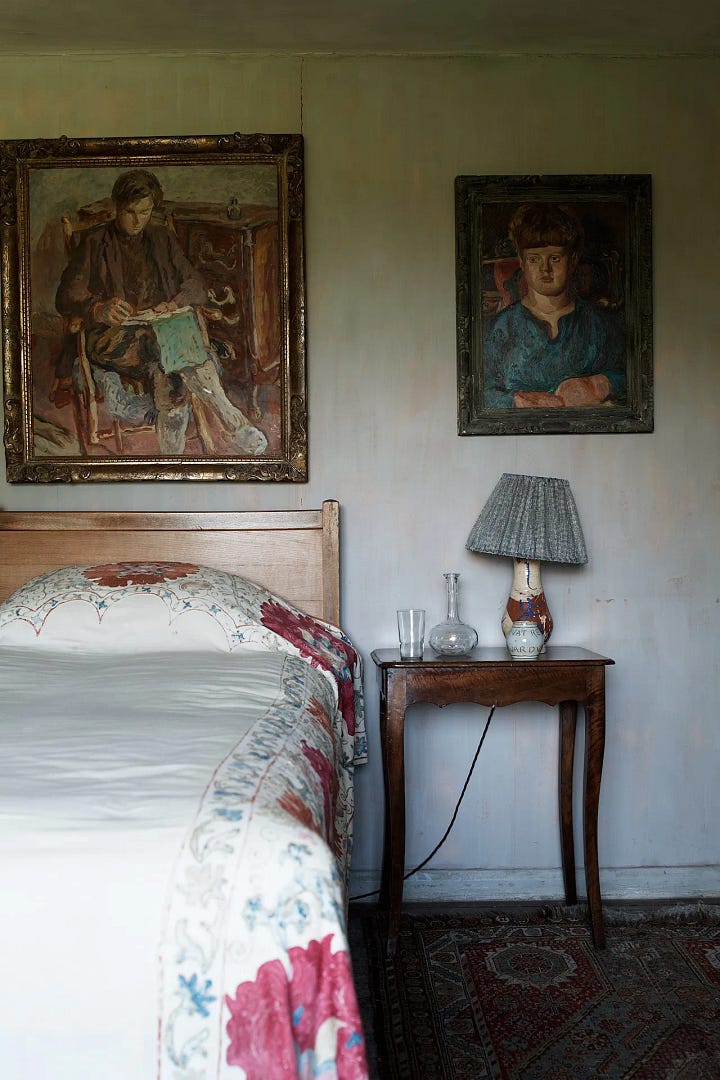
Monk’s House, the country retreat of British writer Virginia Woolf (sister of Vanessa Bell) and her husband Leonard, where they visited regularly from 1919 until Virginia’s death in 1941. A 17th century cottage, the Woolfs improvoved the house considerably during their 50 years there, extending the kitchen, adding a bathroom with hot water, a two-room extension and a writing lodge in the garden where Woolf wrote many of her most acclaimed works. Her short story ‘The Orchard’ was directly inspired by the garden at Monk’s House. Now a National Trust property, the house again looks much as it was whilst the Woolfs inhabited it, filled with their extensive art collection as well as numerous contributions from friends in the Bloomsbury Group. Located in Rodmell in East Sussex, the house reopens on 4th April, tickets are released every Thursday for the following four weeks.
2 Willow Road in Hampstead, London was the modernist home of architect and furniture designer Ernö Goldfinger (yep Ian Fleming took the name for his infamous bond villain), who designed it for himself and his family in 1939. Much of the furniture inside the house are also bespoke designs by Goldfinger. Also on display is the family’s collection of modern art including Henry Moore, Max Ernst and Bridget Riley. Goldfinger was born in Hungary and studied in Paris before moving to the UK. He was greatly inspired by the buildings of Le Corbusier and social housing was a prominent element of his work - he became known for designing high-rise tower blocks including Balfron Tower, Trellick Tower and London’s Metro Central Heights. The house is open on Thursdays and Saturdays, from March to October, for pre-booked visits.
Keep reading with a 7-day free trial
Subscribe to Second Best to keep reading this post and get 7 days of free access to the full post archives.

